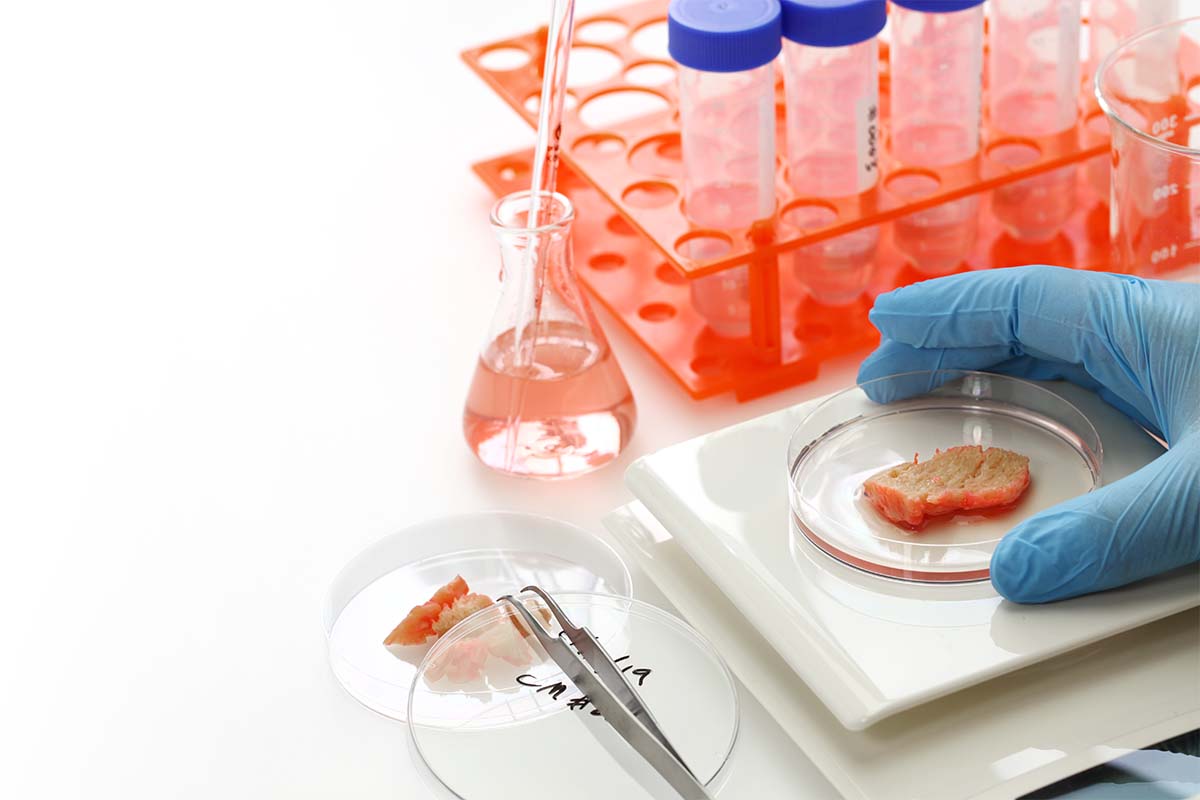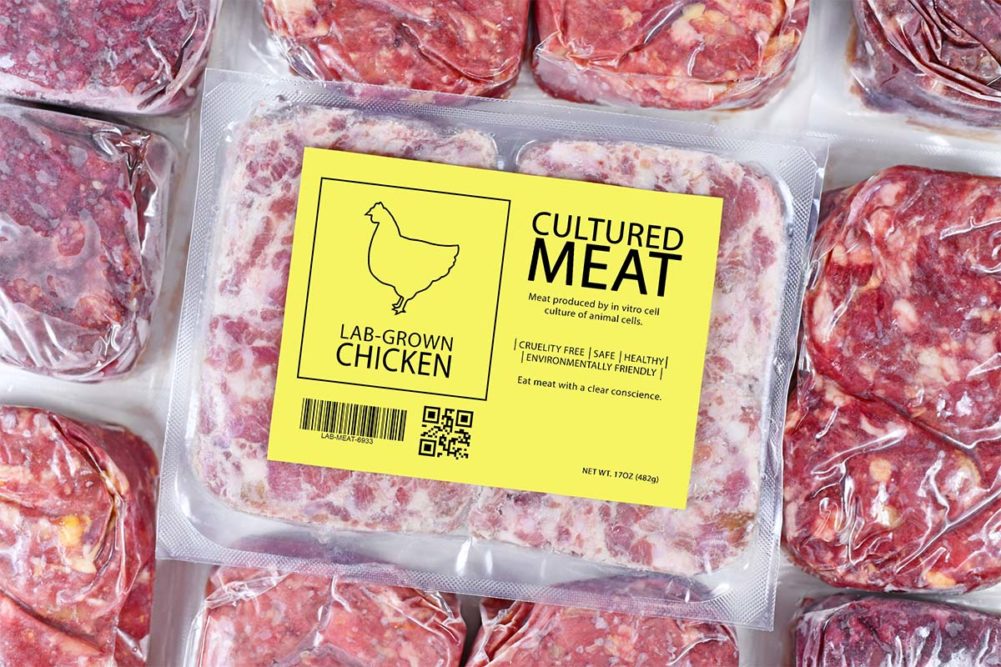Once upon a time, burgers were made with beef and bacon came from a pig. Then turkey wanted recognition beyond the winter holidays and was formed into patties and strips. The meat and poultry industries have continued to evolve. With all these next-generation concepts, the same food safety principles apply as they do for traditional, animal-based products. In some instances, there are other issues to address.
“Food safety cannot be compromised,” said Bo Wei Li, application development specialist, Foodology by Univar Solutions, Downers Grove, Ill. “Severe consequences for people’s health could occur. And, the cost and complexity of a recall are detrimental to a manufacturer’s reputation and profit. The addition of food safety ingredient systems can protect consumers, products and brands.”
Innovation evolution
There’s a growing number of hybrid concepts in today’s marketplace. These are products containing some animal meat along with plant-based proteins, whole grains, vegetables, etc. There’s also a dynamic animal-free protein category, which encompasses everything from fungi and mycelium to cultivated proteins. The latter resembles the real deal but is made using precision fermentation, no animal required. Then there’s the blending of cultured meat with other extras to make animal-free hybrid concepts. The innovations are infinite, as are the unknowns.
“Consumers are looking to reduce meat for a variety of reasons including managing grocery costs, improving health and reducing their environmental impact,” said Karen Constanza, marketing manager-meat, plant-based meat, batters and breadings, Ingredion Inc., Westchester, Ill. “But fully replacing meat in their diet can be daunting for some consumers. Blended and hybrid products offer one option for achieving meat reduction that isn’t as drastic as completely cutting meat from their diets or forcing them towards plant-based meat alternatives.
“Many of the hybrid products entering the market highlight the flavor and nutrition benefits instead of focusing on having less meat in the product, which may be perceived as a negative or lower-quality product. By focusing on the eating experience of adding vegetables and grains to meat products or using ‘hidden veggies’ to boost nutrition, consumers can feel excited about the choices they are making to reduce their meat consumption instead of feeling like they are missing out.”
Steve Zimmerman, senior director of technical sales, NuTek Natural Ingredients, St. Louis Park, Minn., said, “In these categories, nutrition and clean label remain top of mind in the design of the products during development. Creating a combination of hurdles to inhibit the growth of bacteria is a sound strategy to ensure food safety. Hurdles can be deployed via processing technique, like heat treatment or packaging, or through ingredients that create a challenging environment for microorganisms.”
Other safety factors to address involve how novel proteins may trigger allergic reactions, as well as introduce unexpected compounds into the diet. There are many unknowns with potential long-term health implications.
 Source: UCKYO - STOCK.ADOBE.COM
Source: UCKYO - STOCK.ADOBE.COMKeeping Listeria out
Listeria monocytogenes is one of the greatest concerns for manufacturers of fully cooked meat and poultry, the real deal and non-animal formats. This pathogen microorganism is omnipresent in the environment, putting fully cooked products at high risk of contamination and growth. Proper heating to an internal temperature of 165°F will destroy Listeria, but many fully cooked products — namely luncheon meat slices — are not heated prior to consumption.
Listeria is a facultative anaerobic bacterium capable of surviving in the presence or absence of oxygen. It can grow and reproduce inside the host’s cells and is one of the most virulent foodborne pathogens, with 20% to 30% of foodborne listeriosis infections in high-risk individuals being fatal.
Manufacturing plants and equipment are sources of Listeria contamination. It’s a hearty microorganism and can tolerate extreme environmental conditions. It survives and forms biofilms on processing surfaces and equipment that can be difficult to get rid of with normal sanitation procedures. One of the most significant avenues for contamination is slicing equipment, where the contamination occurs after the application of the heat lethality treatment, such as roasting, smoking, etc.
To effectively manage the risk of product contamination, it is necessary to assess where along the product flow the exposed food is most likely to become contaminated and take proper steps to prevent that from occurring. One of the greatest points of concern for food safety is when the product comes in the hands of the consumer. This is why it is paramount that processors do their part by formulating food safety ingredients into products. Commonly used ingredients to create hurdle effects include salt to lower water activity and organic acids to lower pH.
Salts — both sodium chloride and potassium salt — may assist. These salts help unfold animal proteins and enable them to bind water. When water is bound, microbes cannot use it to grow.
NuTek Natural Ingredients, for example, offers a variety of potassium-based salt solutions that are validated to have comparable antimicrobial effects of standard salt when used as a partial or complete replacement for sodium chloride. They can be used effectively in traditional meat products, hybrid meat products and cultured meat products, according to Zimmerman.
“The risk of Listeria contamination necessitates the use of antimicrobials, such as conventional lactate-diacetate blends, and clean-label solutions, such as vinegars and ferments,” said Garrett McCoy, senior manager-research, development and applications, Corbion, Lenexa, Kan. “Plant-based proteins may increase the pH of finished products, necessitating the use of ingredients to control Listeria with minimal impact on flavor.”
Organic acid salts are traditional preservatives. They are often used in a buffered or neutralized format (with a conjugate base). Their mode of action is the same, but their effectiveness varies by the organic acid, specifically the amount of undissociated or non-ionized acid. It is the undissociated acid that penetrates microbial cell walls. Once inside the microorganism, where the pH is near or above neutral, the acid dissociates, lowering the pH. This change in pH impairs or stops growth of the microorganism.
Acetic acid, which is the primary component of vinegar, is recognized as a label-friendly food safety ingredient and commonly used in the formulation of meat and poultry products. Fermentation technology allows for the development of optimized-performance ingredients, such as buffered vinegar, which comes in dry and liquid formats and has a range of acetic acid concentrations and usage rates. Additionally, there are low- and no-sodium options.
The introduction of unknowns
There are other food safety concerns beyond pathogens, including food allergens.
Food allergens are almost always proteins, but not all proteins are food allergens. With that said, the growing array of non-animal proteins being used in the food space, along with the larger amounts being consumed, may trigger an unknown allergic response in consumers.
“During the product development phase of alternative proteins, there is the need to identify potential allergenic proteins present in the source material,” said Tracy Fink, director-scientific programs and science and policy initiatives, Institute of Food Technologists, Chicago. “This includes during all stages, from cell sourcing, growth and production to food processing, as well as identifying any known allergenic proteins in cultured cells, plant-based ingredients or other raw materials used to produce the alternative protein product.”
There are many unknowns in the animal-free protein space. Working with an expert in developing a formal risk assessment process is recommended for companies introducing next-generation proteins into their manufacturing facility.
“Techniques such as genetic engineering, enzymatic treatments or other food processing modifications can impact the allergenicity of the alternative proteins,” said Fink. “Robust hazard identification should be done to aid in determining whether these modifications increase or decrease the potential for allergens.”
Precision fermentation is a newer technology and involves such techniques. It is the recent advancements in cellular agriculture — the process of using precision fermentation to produce genuine animal proteins — that is fueling interest and innovation.
“Precision fermentation is the newest chapter in the history of making food without animals,” said Maija Itkonen, co-founder and chief executive officer, Onego Bio, a US-Finnish food ingredient company. “It allows us to provide people with food that is sustainable, tasty and healthy, without cutting any corners or making any compromises.”
In precision fermentation, bioengineering techniques are used to program microorganisms by giving them a specific genetic code to produce a compound of interest when fermented under precise conditions. The genetic code is the exact copy of the DNA sequence found in a digitized database of animal DNA sequences; however, it requires no animal involvement.
“Multiple inputs in the production process of cultured meats need to be accurately monitored to obtain quality products with enough efficiency to be competitive,” Wei Li said. “The nutrients for the cells and the culture conditions, for example, are actively being researched and optimized to manufacture products that can meet consumers’ expectations.”
Precision technology may be used to produce true food ingredients, which is something that would not be consumed by itself. It may also be used to replicate whole foods, such as animal-free beef burgers. The result is the molecularly identical ingredient or whole food made by microorganisms. There are many unknowns in this space, including food safety issues.
“Though fermentation is age-old technology, precision fermentation, as the name suggests, is very targeted fermentation,” Zimmerman said. “When considering end-to-end process, from raw material to final product at consumer hand, precision fermentation is one unit operation in the process and how that impacts food safety is still to be learned. For example, remanence of metabolites other than the target compound is unknown and how it affects food safety is still to be learnt.”
McCoy added, “One presumption is that cultured meat products will maintain the same nutrient density and composition as traditional meat products. These nutrient-rich materials would be expected to be an excellent growth media for microorganisms, necessitating the use of antimicrobials in a manner similar to traditional meat products.”
Other hidden compounds
Heavy metals are also a concern when working with plant-based ingredients. They are naturally present in the environment and may potentially be toxic to humans. Common heavy metals include arsenic, cadmium, lead and mercury.
“These elements may be found in the soil, rocks, minerals and water,” Fink said. “They can also be released into the environment through industrial processes, mining and the use of agricultural inputs, such as certain fertilizers and pesticides. Plants can absorb heavy metals from the soil or water in which they are grown.”
Potatoes, leafy greens and wheat may have heavy metal exposure, according to research conducted by the US Food and Drug Administration (Total Diet Study: 2018 to 2020). Best management practices for farmers producing these raw materials include monitoring factors like pH and organic matter content.
“Anti-nutritional concerns also arise when certain compounds present in food interfere with the absorption or utilization of nutrients in the body,” Fink said. “Lectins, for example, are found in many plant-based foods, including beans, lentils, peas, grains, nuts and some vegetables. They tend to bind to carbohydrates and interact with the lining of the stomach, which could potentially cause digestive issues for some people.”
Phytates are another category of anti-nutrients that can be found in grains, legumes, nuts and seeds. When consumed by humans, they have a strong attraction for minerals, such as calcium, iron, magnesium and zinc.
“When phytates are consumed, they can bind to these minerals and form complexes that are poorly absorbed in the digestive tract, resulting in potential mineral deficiencies,” Fink said. “This is especially true when consumed in excess.”
Erucic acid is an omega 9 fatty acid found in some plant oils, with canola, also known as rapeseed, a common source. While mono-unsaturated fatty acids are typically considered heart healthy, erucic acid is known to cause lipid accumulation in cardiac tissue.
“As we move forward to new frontiers of novel proteins, it is imperative that food safety and quality be at the forefront,” Fink concluded.



